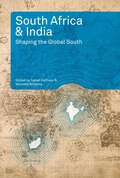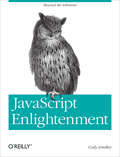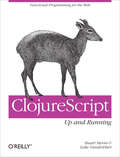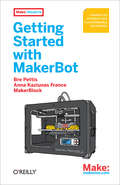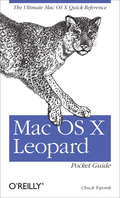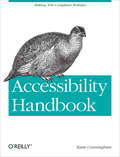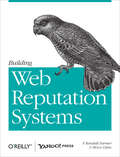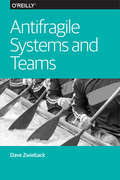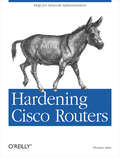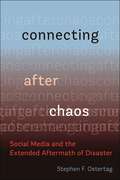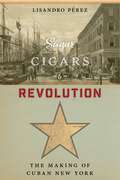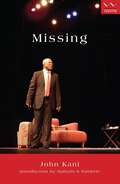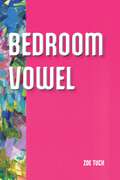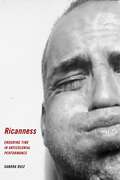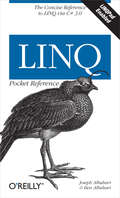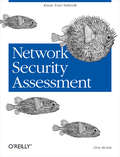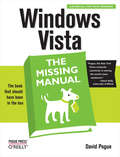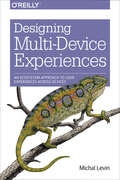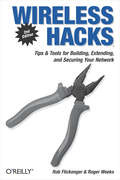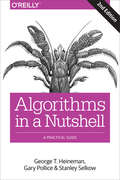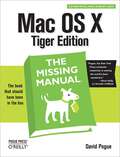- Table View
- List View
South Africa and India: Shaping the Global South
by Michelle Williams Isabel HofmeyrAn innovative book about the relationship between South Africa and IndiaSouth Africa's future is increasingly tied up with that of India. While trade and investment between the two countries is intensifying, they share long-standing historical ties and have much in common: apart from cricket, colonialism and Gandhi, both countries are important players in the global South. As India emerges as a major economic power, the need to understand these links becomes ever more pressing. Can the two countries enter balanced forms of exchange? What forms of transnational political community between these two regions have yet to be researched and understood? The first section of South Africa and India traces the range of historical connection between the two countries. The second section explores unconventional comparisons that offer rich ground on which to build original areas of study. This innovative book looks to a post-American world in which the global South will become ever more important. Within this context, the Indian Ocean arena itself and South Africa and India in particular move to the fore. The book's main contribution lies in the approaches and methods offered by its wide range of contributors for thinking about this set of circumstances.
Apartheid Spies and the Revolutionary Underground
by Billy KenistonOn 28 June 1984 a parcel bomb sent by the apartheid security police exploded in an apartment building in Lubango, Angola, killing 36-year-old Jeanette Schoon and her six-year-old daughter Katryn. The Schoons were members of the revolutionary underground, exiled from South Africa and committed to both the African National Congress and to socialism. What many political activists had feared or suspected at the time was confirmed during the 1990s Truth and Reconciliation Commission: the bomb targeting the Schoons was sent by Craig Williamson, an apartheid spy and high-ranking member of the South African security service.Apartheid Spies and the Revolutionary Underground is the first book-length account of the assassination of Jeanette and Katryn Schoon. Jeanette Curtis Schoon and Craig Williamson first met in 1973 on the Wits University campus. Jeanette was a passionate student radical and part of a network of white radicals fighting apartheid. Williamson had successfully infiltrated the student movement and rose within its ranks. He held positions of trust, first within the National Union of South African Students (NUSAS) and then, after pretending to ‘flee’ the country, as an office-bearer of the International Universities Exchange Fund in Sweden, which helped fund many South Africans in exile.The book uncovers how the lives of a group of white radicals intersected with and were impacted by the undercover security police and their operations both within and outside of South Africa. Intensifying political oppression caused many young radicals to flee South Africa in 1976; many of them, like Jeanette and her partner Marius Schoon, joined the African National Congress in exile. Williamson and the Schoons’ paths, and those of their comrades, continued to cross: he was a guest in their homes, a supplier of funds for their projects, a witness for the prosecution in political trials and, ultimately, the hand that directed targeted assassinations.Williamson received amnesty for his role in the Schoons’ murder, among other crimes. For the friends and family of the Schoons – and for all those seeking social justice – this was an unacceptable outcome and Williamson continues to walk a free man. This book attempts to show the limits of the TRC process to render healing from South Africa’s apartheid past. That justice has not been served to the Schoons remains a tragedy in this story of the struggle against apartheid.
JavaScript Enlightenment: From Library User to JavaScript Developer
by Cody LindleyIf you’re an advanced beginner or intermediate JavaScript developer, JavaScript Enlightenment will solidify your understanding of the language—especially if you use a JavaScript library. In this concise book, JavaScript expert Cody Lindley (jQuery Cookbook) provides an accurate view of the language by examining its objects and supporting nuances.Libraries and frameworks help you build web applications quickly and efficiently, but when things go wrong or performance becomes an issue, knowing how and why they work is critical. If you’re ready to go under the hood and get your hands dirty with JavaScript internals, this is your book.Get a short and digestible summary of ECMA-262, Edition 3, backed by real code you can run instantlyExamine the creation of JavaScript objectsLearn complex values, primitive values, scope, and inheritanceUnderstand the importance of the head objectWork with string, number, and Boolean objects and valuesDiscover how to use the null value and the built-in math objectGet into the details—beyond Mozilla’s reference guide for JavaScript 1.5
Planning and Managing Drupal Projects: Drupal for Designers (Oreilly And Associate Ser.)
by Dani NordinIf you're a solo website designer or part of a small team itching to build interesting projects with Drupal, this concise guide will get you started. Drupal’s learning curve has thrown off many experienced designers, particularly the way it handles design challenges. This book shows you the lifecycle of a typical Drupal project, with emphasis on the early stages of site planning. Learn how to efficiently estimate and set up your own project, so you can focus on ways to make your vision a reality, rather than let project management details constantly distract you.Plan and estimate your project by discovering your client’s goals and audience perceptionsDiscover how Drupal works under the hood, and learn basic DrupalSpeakFrame the UX design challenge through a deeper understanding of your site’s intended usersGet real content for your project as early as possible—before you start prototypingChoose the right modules for your project, and learn about several go-to modulesUnderstand how to walk clients through the Drupal design and development process
ClojureScript: Functional Programming for the Web (Oreilly And Associate Ser.)
by Stuart Sierra Luke VanderHartLearn how to build complete client-side applications with ClojureScript, the Clojure language variant that compiles to optimized JavaScript. This hands-on introduction shows you how ClojureScript not only has similarities to JavaScript—without the flaws—but also supports the full semantics of its parent language. You’ll delve into ClojureScript’s immutable data structures, lazy sequences, first-class functions, macros, and support for JavaScript libraries.No previous experience with Clojure or ClojureScript is necessary. If you’re familiar with JavaScript, HTML, CSS, and the DOM, you’ll quickly discover that ClojureScript has the same reach as JavaScript, but with more power.Start writing ClojureScript code with the Leiningen build systemLearn how the ClojureScript compiler works to produce optimized JavaScriptUse JavaScript functions and libraries directly from ClojureScript codeExplore functions in Clojure’s sequence library such as map, reduce, and filterUse macros to define new control structures or embed domain-specific languagesCompile manually or script your own workflow with ClojureScript’s compiler toolsIntegrate ClojureScript with Clojure on the JVM to build powerful client-server applications
Getting Started with MakerBot: A Hands-On Introduction to Affordable 3D Printing
by Bre Pettis Jay Shergill Anna Kaziunas FranceReady to join the personal fabrication movement? This hands-on book shows you how to make a wide variety of physical objects with the amazing MakerBot 3D printer.It’s handy when you need a replacement for something lost, broken, or no longer made—like a knob on your stove. You can make things instead of buying them, or solve problems with inventions of your own. The possibilities are endless, and MakerBot is the fun, affordable, and inspiring way to go. Get started with your own little factory today!Set up your MakerBot Replicator 2 and understand how it worksLearn the basics and print 10 useful objects right awayMake objects with sturdy yet biodegradable PLAGet examples of real-world problem solving, from ceiling hooks to hermit crab shellsChoose from thousands of free designs on Thingiverse.com—and share your ownRepurpose disposable products by making them part of your designDesign your own 3D objects, using SketchUp, Autodesk 123D, OpenSCAD, and other toolsUse 3D scanning technology to replicate real objects around you
Mac OS X Leopard Pocket Guide: The Ultimate Mac OS X Quick Reference Guide
by Chuck ToporekNo matter how much Mac experience you have, Mac OS X Leopard requires that you get reacquainted. This little guide is packed with more than 300 tips and techniques to help you do just that. You get all details you need to learn Leopard's new features, configure your system, and get the most out of your Mac. Pronto.Mac OS X Leopard Pocket Guide offers an easy-to-read format for users of all levels. If you're a Mac newcomer, there's a Survival Guide that explains how to adapt, and a chapter on Mac OS X's key features. Experienced Mac users can go right to the heart of Leopard with chapters on system preferences, applications and utilities, and configuring. In all, plenty of tables, concise descriptions, and step-by-step instructions explain:What's new in Leopard, including the Time MachineHow to use Leopard's totally revamped FinderAll about Spaces and how to quickly flip between themHow to search for and find things with SpotlightHow to use Leopard's enhanced Parental ControlsHandy keyboard shortcuts to help you be more efficientQuick tips for setting up and configuring your Mac to make it your ownIf you're ready to tame Apple's new cat, this is the guide you want.
Accessibility Handbook: Making 508 Compliant Websites
by Katie CunninghamGet practical guidelines for making your website accessible to people with disabilities. With this handbook, you’ll learn how to design or develop a site that conforms to Section 508 of the US Rehabilitation Act—and in the process you’ll discover how to provide a better user experience for everyone.The Accessibility Handbook introduces you to several audiences that have difficulty using today’s complex websites, including people with blindness, hearing loss, physical disabilities, and cognitive disorders. Learn how to support assistive technologies, and understand which fonts, colors, page layouts, and other design elements work best—without having to exclude advanced functions, hire outside help, or significantly increase overhead.Develop solutions that accommodate:Complete blindness. Create a logical document flow to support screen readersLow vision and color blindness. Optimize images and color schemes, and ensure your site enlarges gracefullyHearing impairment. Provide video captions and visual alerts for interactive featuresPhysical disabilities. Make forms, popups, and navigation easier to useCognitive disorders. Adapt fonts and text styles for dyslexic users, and design consistent, well-organized pages for people with ADHD
Building Web Reputation Systems
by Randy Farmer Bryce GlassWhat do Amazon's product reviews, eBay's feedback score system, Slashdot's Karma System, and Xbox Live's Achievements have in common? They're all examples of successful reputation systems that enable consumer websites to manage and present user contributions most effectively. This book shows you how to design and develop reputation systems for your own sites or web applications, written by experts who have designed web communities for Yahoo! and other prominent sites.Building Web Reputation Systems helps you ask the hard questions about these underlying mechanisms, and why they're critical for any organization that draws from or depends on user-generated content. It's a must-have for system architects, product managers, community support staff, and UI designers.Scale your reputation system to handle an overwhelming inflow of user contributionsDetermine the quality of contributions, and learn why some are more useful than othersBecome familiar with different models that encourage first-class contributionsDiscover tricks of moderation and how to stamp out the worst contributions quickly and efficientlyEngage contributors and reward them in a way that gets them to returnExamine a case study based on actual reputation deployments at industry-leading social sites, including Yahoo!, Flickr, and eBay
Antifragile Systems and Teams
by Dave ZwiebackHow Can DevOps Make You Antifragile?All complex computer systems eventually break, despite all of the heavy-handed, bureaucratic change-management processes we throw at them. But some systems are clearly more fragile than others, depending on how well they cope with stress. In this O’Reilly report, Dave Zwieback explains how the DevOps methodology can help make your system antifragile.Systems are fragile when organizations are unprepared to handle changing conditions. As generalists adept at several roles, DevOps practitioners adjust more easily to the fast pace of change. Rather than attempt to constrain volatility, DevOps embraces disorder, randomness, and impermanence to make systems even better.This concise report covers:Why Etsy, Netflix, and other antifragile companies constantly introduce volatility to test and upgrade their systemsHow DevOps removes the schism between developers and operations, enlisting developers to deploy as well as buildUsing continual experimentation and minor failures to make critical adjustments—and discover breakthroughsHow an overreliance on measurement and automation can make systems fragileWhy sharing increases trust, collaboration, and tribal knowledgeDownload this free report and learn how the DevOps philosophy of Culture, Automation, Measurement, and Sharing makes use of changing conditions and even embarrassing mistakes to help improve your system—and your organization.Dave Zwieback has been managing large-scale, mission-critical infrastructure and teams for 17 years.
Mastering CloudForms Automation: An Essential Guide for Cloud Administrators
by Peter McGowanLearn how to work with the Automate feature of CloudForms, the powerful Red Hat cloud management platform that lets you administer your virtual infrastructure, including hybrid public and private clouds. This practical hands-on introduction shows you how to increase your operational efficiency by automating day-to-day tasks that now require manual input.Throughout the book, author Peter McGowan provides a combination of theoretical information and practical coding examples to help you learn the Automate object model. With this CloudForms feature, you can create auto-scalable cloud applications, eliminate manual decisions and operations when provisioning virtual machines and cloud instances, and manage your complete virtual machine lifecycle.In six parts, this book helps you:Learn the objects and concepts for developing automation scripts with CloudForms AutomateCustomize the steps and workflows involved in provisioning virtual machinesCreate and use service catalogs, items, dialogs, objects, bundles, and hierarchiesUse CloudForm’s updated workflow to retire and delete virtual machines and servicesOrchestrate and coordinate with external services as part of a workflowExplore distributed automation processing as well as argument passing and handling
Hardening Cisco Routers: Help for Network Administrators
by Thomas AkinAs a network administrator, auditor or architect, you know the importance of securing your network and finding security solutions you can implement quickly. This succinct book departs from other security literature by focusing exclusively on ways to secure Cisco routers, rather than the entire network. The rational is simple: If the router protecting a network is exposed to hackers, then so is the network behind it. Hardening Cisco Routers is a reference for protecting the protectors. Included are the following topics:The importance of router security and where routers fit into an overall security planDifferent router configurations for various versions of Cisco?s IOSStandard ways to access a Cisco router and the security implications of eachPassword and privilege levels in Cisco routersAuthentication, Authorization, and Accounting (AAA) controlRouter warning banner use (as recommended by the FBI) Unnecessary protocols and services commonly run on Cisco routersSNMP securityAnti-spoofingProtocol security for RIP, OSPF, EIGRP, NTP, and BGPLogging violationsIncident responsePhysical securityWritten by Thomas Akin, an experienced Certified Information Systems Security Professional (CISSP) and Certified Cisco Academic Instructor (CCAI), the book is well organized, emphasizing practicality and a hands-on approach. At the end of each chapter, Akin includes a Checklist that summarizes the hardening techniques discussed in the chapter. The Checklists help you double-check the configurations you have been instructed to make, and serve as quick references for future security procedures.Concise and to the point, Hardening Cisco Routers supplies you with all the tools necessary to turn a potential vulnerability into a strength. In an area that is otherwise poorly documented, this is the one book that will help you make your Cisco routers rock solid.
Connecting After Chaos: Social Media and the Extended Aftermath of Disaster
by Stephen F. OstertagA riveting portrait of how one community used the power of culture to restore their lives and socialconnections in the years after a devastating natural disasterNatural disasters and other such catastrophes typically attract large-scale media attention and public concern in their immediate aftermath. However, rebuilding efforts can take years or even decades, and communities are often left to repair physical and psychological damage on their own once public sympathy fades away. Connecting After Chaos tells the story of how people restored their lives and society in the months and years after disaster, focusing on how New Orleanians used social media to cope with trauma following Hurricane Katrina.Stephen F. Ostertag draws on almost a decade of research to create a vivid portrait of life in “settling times,” a term he defines as a distinct social condition of prolonged insecurity and uncertainty after disasters. He portrays this precarious state through the story of how a group of strangers began blogging in the wake of Katrina, and how they used those blogs to put their lives and their city back together. In the face of institutional failure, weak authority figures, and an abundance of chaos, the people of New Orleans used social media to gain information, foster camaraderie, build support networks, advocate for and against proposed policies, and cope with trauma. In the efforts of these bloggers, Ostertag finds evidence of the capacity of this and other forms of cultural work to motivate, guide, and energize collective action aimed at weathering the constant instability of extended recovery periods. Connecting After Chaos is both a compelling story of a community in crisis and a broader argument for the power of social media and cultural cooperation to create order when chaos abounds.
Sugar, Cigars, and Revolution: The Making of Cuban New York
by Lisandro PérezWinner, 2020 Herbert H. Lehman Prize for Distinguished Scholarship in New York historyHonorable Mention, 2019 CASA Literary Prize for Studies on Latinos in the United States, given by La Casa de las Américas The dramatic story of the origins of the Cuban community in nineteenth-century New York. More than one hundred years before the Cuban Revolution of 1959 sparked an exodus that created today’s prominent Cuban American presence, Cubans were settling in New York City in what became largest community of Latin Americans in the nineteenth-century Northeast. This book brings this community to vivid life, tracing its formation and how it was shaped by both the sugar trade and the long struggle for independence from Spain. New York City’s refineries bought vast quantities of raw sugar from Cuba, ultimately creating an important center of commerce for Cuban émigrés as the island tumbled into the tumultuous decades that would close out the century and define Cuban nationhood and identity. New York became the primary destination for Cuban émigrés in search of an education, opportunity, wealth, to start a new life or forget an old one, to evade royal authority, plot a revolution, experience freedom, or to buy and sell goods. While many of their stories ended tragically, others were steeped in heroism and sacrifice, and still others in opportunism and mendacity. Lisandro Pérez beautifully weaves together all these stories, showing the rise of a vibrant and influential community. Historically rich and engrossing, Sugar, Cigars, and Revolution immerses the reader in the riveting drama of Cuban New York. Lisandro Pérez analyzes the major forces that shaped the community, but also tells the stories of individuals and families that made up the fabric of a little-known immigrant world that represents the origins of New York City's dynamic Latino presence.
Missing: A play
by John KaniMissing is the story of Robert Khalipa, an ANC cadre living in exile, who is very senior in the organisation but is left out of the negotiations and almost forgotten in Sweden. Robert has a wealthy Swedish wife, Anna, and they have a daughter who is a practising doctor in a hospital in Stockholm. There is also Robert’s protégé Peter Tshabalala, junior in the organisation, yet he gets the call to return to South African to join the democratic government. What follows is a story of conspiracies, lies, back stabbing and disappointments. Robert and his family are faced with the challenges of a South Africa that has changed radically from the one he remembers from more than thirty years ago. The government, in his opinion, does not seem to uphold the principles enshrined in the Freedom Charter. There is also conflict within his own family. Robert wants to stay in South Africa, while his wife and daughter want to go back to Sweden. Their love is tested to breaking point and difficult decisions have to be made by every individual. As with Kani’s very successful and often-performed previous play, Nothing but the Truth, the ambiguities of freedom and of personal commitment are explored in this play.
Bedroom Vowel
by Zoe TuckConsisting of lyric love letters to friends and musings on daily desire, nostalgia, and thirst for connection, Bedroom Vowel traces the development of an everyday philosophy formed in the social life of a creative
Ricanness: Enduring Time in Anticolonial Performance
by Sandra RuizHonorable Mention, 2020 Barnard Hewitt Award for Outstanding Research in Theatre History, given by the American Society for Theatre ResearchArgues that Ricanness operates as a continual performance of bodily endurance against US colonialismIn 1954, Dolores “Lolita” Lebrón and other members of the Puerto Rican Nationalist Party led a revolutionary action on the chambers of Congress, firing several shots at the ceiling and calling for the independence of the island. Ricanness: Enduring Time in Anticolonial Performance begins with Lebrón’s vanguard act, distilling the relationship between Puerto Rican subjectivity, gender, sexuality, and revolutionary performance under colonial time.Ruiz argues that Ricanness—a continual performance of bodily endurance against US colonialism through different measures of time—uncovers what’s at stake politically for the often unwanted, anticolonial, racialized and sexualized enduring body. Moving among theatre, experimental video, revolutionary protest, photography, poetry, and durational performance art, Ricanness stages scenes in which the philosophical, social, and psychic come together at the site of aesthetics, against the colonization of time. Analyzing the work of artists and revolutionaries like ADÁL, Lebrón, Papo Colo, Pedro Pietri, and Ryan Rivera, Ricanness imagines a Rican future through the time travel extended in their aesthetic interventions, illustrating how they have reformulated time itself through nonlinear aesthetic practices.
Conspicuous Consumption in Africa
by Ilana van Wyk Deborah PoselA collection of essays examining cultures of consumption on the African continentFrom early department stores in Cape Town to gendered histories of sartorial success in urban Togo, contestations over expense accounts at an apartheid state enterprise, elite wealth and political corruption in Angola and Zambia, the role of popular religion in the political intransigence of Jacob Zuma, funerals of big men in Cameroon, youth cultures of consumption in Niger and South Africa, queer consumption in Cape Town, middle-class food consumption in Durban and the consumption of luxury handcrafted beads, this collection of essays explores the ways in which conspicuous consumption is foregrounded in various African contexts and historical moments. The essays in Conspicuous Consumption in Africa put Thorstein Veblen’s concept under robust critical scrutiny, delving into the pleasures, stresses and challenges of consuming in its religious, generational, gendered and racialised aspects, revealing conspicuous consumption as a layered set of practices, textures and relations. This volume shows how central and revealing conspicuous consumption can be to fathoming the history of Africa’s projects of modernity, and their global lineages and legacies. In its grounded, up-close case studies, it is likely to feed into current public debates on the nature and future of African societies – South African society in particular.
LINQ Pocket Reference: Learn and Implement LINQ for .NET Applications (Pocket Reference (O'Reilly))
by Ben Albahari Joseph AlbahariReady to take advantage of LINQ with C# 3.0? This guide has the detail you need to grasp Microsoft's new querying technology, and concise explanations to help you learn it quickly. And once you begin to apply LINQ, the book serves as an on-the-job reference when you need immediate reminders.All the examples in the LINQ Pocket Reference are preloaded into LINQPad, the highly praised utility that lets you work with LINQ interactively. Created by the authors and free to download, LINQPad will not only help you learn LINQ, it will have you thinking in LINQ.This reference explains:LINQ's key concepts, such as deferred execution, iterator chaining, and type inference in lambda expressionsThe differences between local and interpreted queriesC# 3.0's query syntax in detail-including multiple generators, joining, grouping, query continuations, and moreQuery syntax versus lambda syntax, and mixed syntax queries Composition and projection strategies for complex queriesAll of LINQ's 40-plus query operatorsHow to write efficient LINQ to SQL queriesHow to build expression trees from scratchAll of LINQ to XML's types and their advanced useLINQ promises to be the locus of a thriving ecosystem for many years to come. This small book gives you a huge head start."The authors built a tool (LINQPad) that lets you experiment with LINQ interactively in a way that the designers of LINQ themselves don't support, and the tool has all kinds of wonderful features that LINQ, SQL and Regular Expression programmers alike will want to use regularly long after they've read the book."-Chris Sells, Connected Systems Program Manager, Microsoft
Network Security Assessment: Know Your Network
by Chris McNabThere are hundreds--if not thousands--of techniques used to compromise both Windows and Unix-based systems. Malicious code and new exploit scripts are released on a daily basis, and each evolution becomes more and more sophisticated. Keeping up with the myriad of systems used by hackers in the wild is a formidable task, and scrambling to patch each potential vulnerability or address each new attack one-by-one is a bit like emptying the Atlantic with paper cup.If you're a network administrator, the pressure is on you to defend your systems from attack. But short of devoting your life to becoming a security expert, what can you do to ensure the safety of your mission critical systems? Where do you start?Using the steps laid out by professional security analysts and consultants to identify and assess risks, Network Security Assessment offers an efficient testing model that an administrator can adopt, refine, and reuse to create proactive defensive strategies to protect their systems from the threats that are out there, as well as those still being developed.This thorough and insightful guide covers offensive technologies by grouping and analyzing them at a higher level--from both an offensive and defensive standpoint--helping administrators design and deploy networks that are immune to offensive exploits, tools, and scripts. Network administrators who need to develop and implement a security assessment program will find everything they're looking for--a proven, expert-tested methodology on which to base their own comprehensive program--in this time-saving new book.
Windows Vista: The Missing Manual
by David PogueWindows Vista is Microsoft's most important software release in more than a decade. It offers users an abundance of new and upgraded features that were more than five years in the making: a gorgeous, glass-like visual overhaul; superior searching and organization tools; a multimedia and collaboration suite; and above all, a massive, top-to-bottom security-shield overhaul. There's scarcely a single feature of the older versions of Windows that hasn't been tweaked, overhauled, or replaced entirely. But when users first encounter this beautiful new operating system, there's gonna be a whole lotta head-scratchin', starting with trying to figure out which of the five versions of Vista is installed on the PC (Home, Premium, Business, Enterprise, Ultimate). Thankfully, Windows Vista: The Missing Manual offers coverage of all five versions. Like its predecessors, this book from New York Times columnist, bestselling author, and Missing Manuals creator David Pogue illuminates its subject with technical insight, plenty of wit, and hardnosed objectivity for beginners, veteran standalone PC users, and those who know their way around a network. Readers will learn how to: Navigate Vista's elegant new desktopLocate anything on your hard drive quickly with the fast, powerful, and fully integrated search functionUse the Media Center to record TV and radio, present photos, play music, and record any of the above to DVDChat, videoconference, and surf the Web with the vastly improved Internet Explorer 7 tabbed browserBuild a network for file sharing, set up workgroups, and connect from the roadProtect your PC and network with Vista's beefed up securityAnd much more.This jargon-free guide explains Vista's features clearly and thoroughly, revealing which work well and which don't. It's the book that should have been in the box!
Designing Multi-Device Experiences: An Ecosystem Approach to User Experiences across Devices
by Michal LevinWelcome to our multi-device world, a world where a user’s experience with one application can span many devices—a smartphone, a tablet, a computer, the TV, and beyond. This practical book demonstrates the variety of ways devices relate to each other, combining to create powerful ensembles that deliver superior, integrated experiences to your users.Learn a practical framework for designing multi-device experiences, based on the 3Cs—Consistent, Complementary, and Continuous approachesGraduate from offering everything on all devices, to delivering the right thing, at the right time, on the best (available) deviceApply the 3Cs framework to the broader realm of the Internet of Things, and design multi-device experiences that anticipate a fully connected worldLearn how to measure your multi-device ecosystem performanceGet ahead of the curve by designing for a more connected future
Wireless Hacks: Tips & Tools for Building, Extending, and Securing Your Network
by Rob Flickenger Roger WeeksThe popularity of wireless networking has grown exponentially over the past few years, despite a general downward trend in the telecommunications industry. More and more computers and users worldwide communicate via radio waves every day, cutting the tethers of the cabled network both at home and at work.Wireless technology changes not only the way we talk to our devices, but also what we ask them to do. With greater flexibility, broader range, and increased mobility, wireless networks let us live, work, and think differently. Wireless networks also open up a vast range of tasty new hack possibilities, from fine-tuning network frequencies to hot-rodding handhelds.The second edition of Wireless Hacks, co-authored by Rob Flickenger and Roger Weeks, brings readers more of the practical tips and tricks that made the first edition a runaway hit, selling nearly 30,000 copies. Completely revised and updated, this version includes over 30 brand new hacks, major overhauls of over 30 more, and timely adjustments and touchups to dozens of other hacks introduced in the first edition. From passive network scanning to aligning long-distance antennas, beefing up wireless network security, and beyond, Wireless Hacks answers real-life networking needs with direct solutions.Flickenger and Weeks both have extensive experience in systems and network administration, and share a passion for making wireless more broadly available. The authors include detailed coverage for important new changes in specifications and in hardware and software, and they delve deep into cellular and Bluetooth technologies.Whether you need your wireless network to extend to the edge of your desk, fit into your backpack, or cross county lines, the proven techniques in Wireless Hacks will show you how to get the coverage and functionality you're looking for.
Algorithms in a Nutshell: A Practical Guide
by Gary Pollice Stanley Selkow George T. HeinemanCreating robust software requires the use of efficient algorithms, but programmers seldom think about them until a problem occurs. This updated edition of Algorithms in a Nutshell describes a large number of existing algorithms for solving a variety of problems, and helps you select and implement the right algorithm for your needs—with just enough math to let you understand and analyze algorithm performance.With its focus on application, rather than theory, this book provides efficient code solutions in several programming languages that you can easily adapt to a specific project. Each major algorithm is presented in the style of a design pattern that includes information to help you understand why and when the algorithm is appropriate.With this book, you will:Solve a particular coding problem or improve on the performance of an existing solutionQuickly locate algorithms that relate to the problems you want to solve, and determine why a particular algorithm is the right one to useGet algorithmic solutions in C, C++, Java, and Ruby with implementation tipsLearn the expected performance of an algorithm, and the conditions it needs to perform at its bestDiscover the impact that similar design decisions have on different algorithmsLearn advanced data structures to improve the efficiency of algorithms
Mac OS X: The Missing Manual (Missing Manual)
by David PogueYou can set your watch to it: As soon as Apple comes out with another version of Mac OS X, David Pogue hits the streets with another meticulous Missing Manual to cover it with a wealth of detail. The new Mac OS X 10.4, better known as Tiger, is faster than its predecessors, but nothing's too fast for Pogue and Mac OS X: The Missing Manual. There are many reasons why this is the most popular computer book of all time.With its hallmark objectivity, the Tiger Edition thoroughly explores the latest features to grace the Mac OS. Which ones work well and which do not? What should you look for? This book tackles Spotlight, an enhanced search feature that helps you find anything on your computer; iChat AV for videoconferencing; Automator for automating repetitive, manual or batch tasks; and the hundreds of smaller tweaks and changes, good and bad, that Apple's marketing never bothers to mention.Mac OS X: The Missing Manual, Tiger Edition is the authoritative book that's ideal for every user, including people coming to the Mac for the first time. Our guide offers an ideal introduction that demystifies the Dock, the unfamiliar Mac OS X folder structure, and the entirely new Mail application. There are also mini-manuals on iLife applications such as iMovie, iDVD, and iPhoto, those much-heralded digital media programs, and a tutorial for Safari, Mac's own web browser. And plenty more: learn to configure Mac OS X using the System Preferences application, keep your Mac secure with FileVault, and learn about Tiger's enhanced Firewall capabilities. If you're so inclined, this Missing Manual also offers an easy introduction to the Terminal application for issuing basic Unix commands. There's something new on practically every page, and David Pogue brings his celebrated wit and expertise to every one of them. Mac's brought a new cat to town and we have a great new way to tame it.
